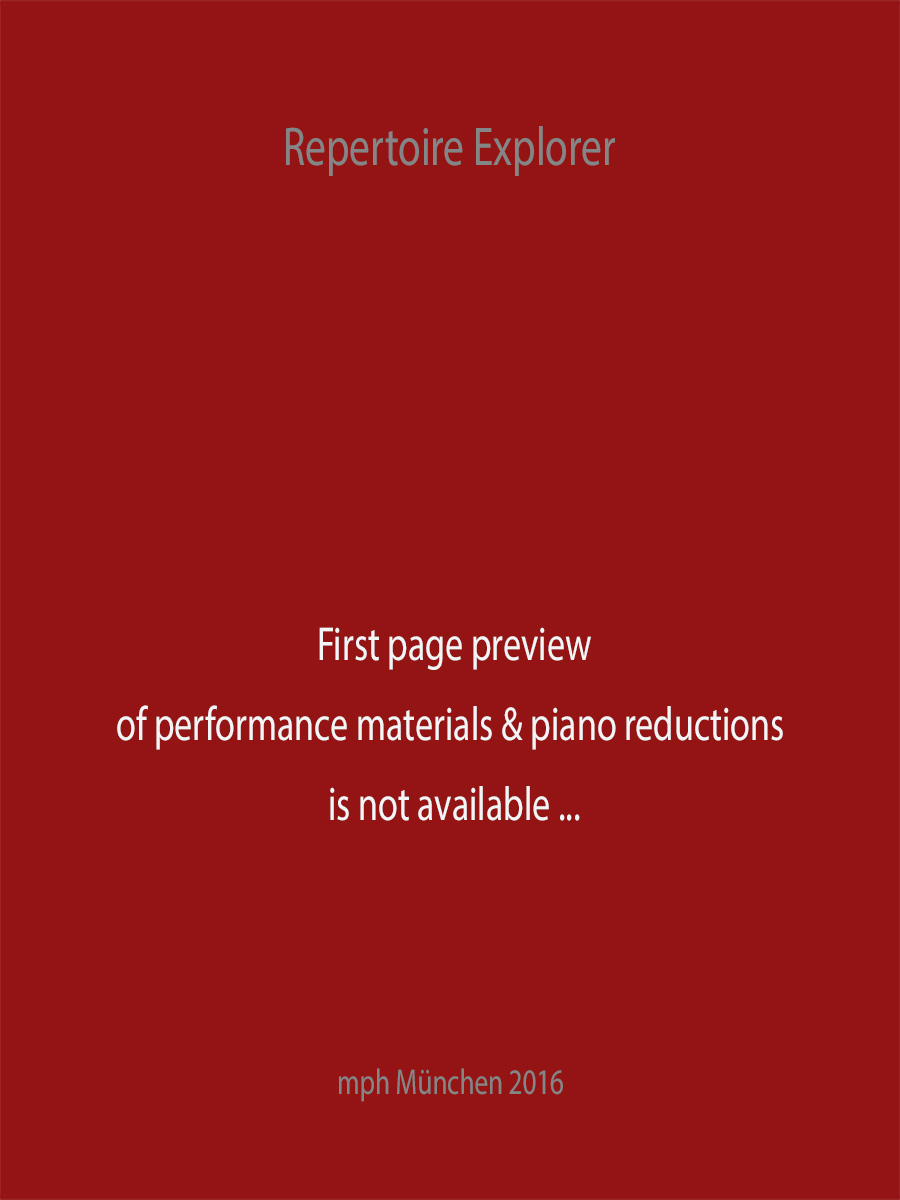Piano Quintet in F minor Op. 95 (String Parts)
Berger, Wilhelm
20,00 €
Preface
Berger, Wilhelm
Piano Quintet in F minor Op. 95 (String Parts)
Though a quick perusal of the score to his F-minor Piano Quintet (op. 95) immediately whets the appetite for more, Wilhelm Berger (1861–1911) is completely unknown today, even among musicologists. Almost an exact contemporary of Gustav Mahler, he does not even appear on the periphery of the standard music histories of fin de siècle Germany. Berger is a truly forgotten figure who is at best occasionally mentioned in the statistics of the period’s art music. Given the music we find in his Piano Quintet, we can only stand amazed at the wealth of music written at the time, a wealth so great that it allows us to nonchalantly ignore music of this caliber in our concert life. We need only compare the burgeoning melancholy of the brief string quartet section of the opening Allegro non troppo ed energico (15 mm. after E), the tender beginning of the slow, lyrical second movement (Poco adagio), or the radiantly Mediterranean opening of the following Molto vivace to obtain an inkling of the sort of buried gem of the piano quintet repertoire we are dealing with. The piece is in a class by itself, from the melodic quality of its themes to the variegated hues of its ever-changing but never overloaded late-romantic harmonies, from the varied course of its musical design to the virtuosity required by its generally limpid texture, which demands considerable technique and above all sensitive ensemble playing from the musicians to adequately present its constant shifts of emphasis between melody, accompaniment, and tutti. It is these shifts that constitute the charm of this music, especially in the third movement (Molto vivace), which forms the aesthetic heart of Berger’s Piano Quintet with its constant yet elegantly poised interplay of sections dominated by agile scalar figures and lyrical moments governed by chordal harmonies. Viewed in this light, this round dance is constructed in much the same way as such admirable fast middle movements as the Scherzo – Furiant: Molto vivace from Antonín Dvořák’s Second Piano Quintet in A major (op. 81) or the Allegro vivo from Gabriel Fauré’s Second Piano Quintet in C minor (op. 115), both of which reveal an equally felicitous combination of richly developed contrasting moods. Berger’s op. 95 has little in common with the gravitas and ponderous counterpoint of many piano quintets by his fin de siècle German counterparts, such as the two C-minor quintets by his successor at Meiningen, Max Reger (op. post., 1898, and op. 64, 1901), or Friedrich Gernsheim’s quintets in D minor, (op. 35, 1876) and B minor (1896).
For more information on the piece:
Read the preface to the full score / das Vorwort zur Partitur lesen > HERE
Score Data
| Score No. | 1058b |
|---|---|
| Edition | Repertoire Explorer |
| Genre | Chamber Music |
| Size | 225 x 320 mm |
| Size | 225 x 320 mm |
| Specifics | Set of String Parts |
| Printing | Reprint |
| Specifics | Set of 5 String Parts |
